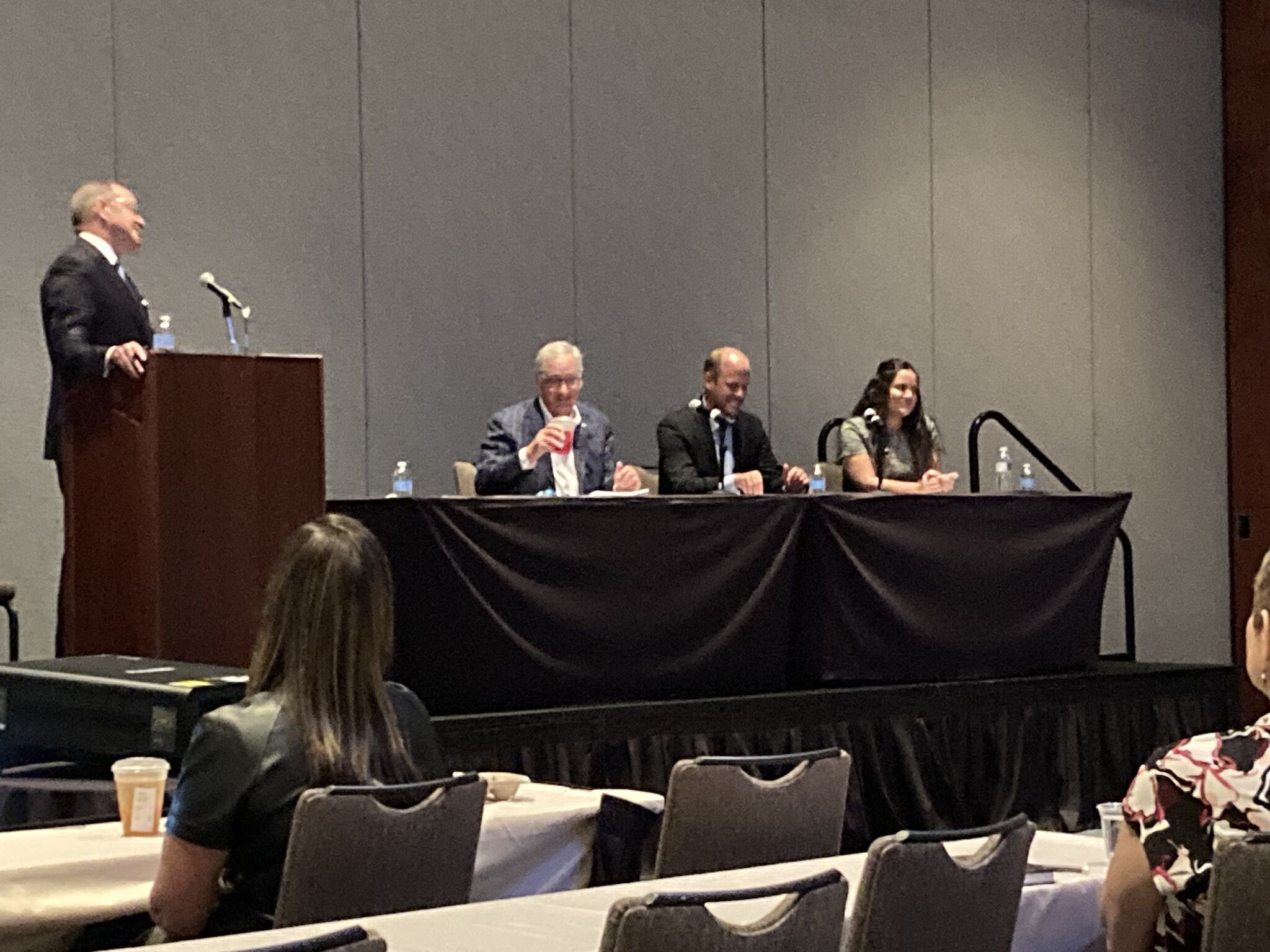Share This Article:

WCI 2025
The whole point of the Grand Bargain is to keep litigation to a minimum and take care of workers with job-related injuries, but anyone who's spent a little time in the industry has seen cases end up in costly and time-consuming litigation.
With technology, especially AI, promising to make all facets of life easier, is there a road ahead to a less litigious workers' compensation future? Such a question was at the heart of the WCI session "Technology's Role in Worker's Compensation Litigation," presented by Max Koonce of Sedgwick; Michael Pettit of Sedgwick; Alexandra Jones of Rissman, Barrett, Hurt, Donahue, McLain & Mangan; Marc Salm of Publix.
Tech's Here, but Litigation is Too
The questions surrounding technology in workers' compensation aren't all that different from those surrounding tech in other aspects of life, Koonce explained.
"We've got a ton of stuff out there: Smartphones, smart rings, wearable devices," Koonce said. "I wonder what's the real benefit because we have all this data, so how do we use it?"
For Salm, the challenge is that people don't always understand the "bargain" part of the Grand Bargain.
"Not everyone gets what they want," Salm said. "Workers' compensation isn't the Publix deli."
Salm added that Publix doesn't have much interest in denying a lot of claims, and sees a role for technology in keeping injured workers from thinking they have to litigate to get benefits.
"Technology can prevent litigation and make the claimant happier," Salm said.
Nonetheless, litigation still happens, Jones said, because not all questions have an easy answer and people can read statutes and regulations differently.
"Litigation exists to resolve what can't be done informally," Jones said. "It's what we have available when it can be resolved easily."
Koonce noted a trend of claimants securing an attorney earlier in the claim cycle.
"More and more claimants are coming in with attorney representation day one," Koonce said, and highlighted three areas where attorney representation is most prevalent:
(1) Animosity toward the employer.
(2) The claims examiner "ticked them off."
(3) Just a disgruntled person.
"All of these involve some kind of atmosphere that the claimant perceived as negative," Koonce said.
Where Does the Tech Come In?
Pettit picked up on the issue of attorney representation, noting that it represents a "huge shift," with some 20% of claims coming with an attorney at day one.
However, technology's role may prove useful for understanding what prompts a claimant to get an attorney later on during the claim.
"What does it mean when someone gets an attorney at 180 days?" Pettit said. "That's where technology, data, and AI can come in and assist the claim file."
For Salm, technology can help with the kind of communication that might lower an urge to litigate.
"Employers and carriers can reduce litigation through tech," Salm said. "You can mitigate a lack of communication and confusion through secure messaging and mobile apps to keep people updated on their claims."
Helping the Humans Keep it Human
But even with the help of technology, Salm explained that some basics remain in understanding why litigation happens in workers' compensation.
"At Publix, we see litigation from communication problems and that we fail to meet the expectations of our associates," Salm said. "Maybe the adjuster used the wrong tone of voice or the associate didn't get the service they wanted, so they got someone to help them."
Technology can help to look for things the human eye might miss, Salm noted.
"We're confident that predictive analytics can scrape the claim notes to spot signs of associate dissatisfaction and use that to mitigate risks of litigation with advocacy and discussions with the associate's manager," Salm said. "Place the associate at the center and take conflict out of the claim."
Koonce agreed.
"You need the right resources at the right time," Koonce said. "We used to have a shotgun approach, but in today's environment, we can have so much data that we can get the claim down to a very narrow group to predict how the claim is going to behave."
Even with the best technology and a desire to stay as current as possible, Pettit and Salm said that the human touch still goes a long way.
"Nothing replaces a handwritten note," Pettit said.
"Publix sends injured workers a handwritten note," Salm noted, "with a picture of an injured dog."
AI california case file caselaw case management case management focus claims compensability compliance compliance corner courts covid do you know the rule employers exclusive remedy florida glossary check Healthcare hr homeroom insurance insurers iowa kentucky leadership NCCI new jersey new york ohio pennsylvania roadmap Safety safety at work state info tech technology violence WDYT west virginia what do you think women's history women's history month workers' comp 101 workers' recovery Workplace Safety Workplace Violence
Read Also
About The Author
About The Author
-
Frank Ferreri
Frank Ferreri, M.A., J.D. covers workers' compensation legal issues. He has published books, articles, and other material on multiple areas of employment, insurance, and disability law. Frank received his master's degree from the University of South Florida and juris doctor from the University of Florida Levin College of Law. Frank encourages everyone to consider helping out the Kind Souls Foundation and Kids' Chance of America.
More by This Author
Read More
- Dec 27, 2025
- Frank Ferreri
- Dec 24, 2025
- Chris Parker
- Dec 24, 2025
- Frank Ferreri
- Dec 23, 2025
- Chris Parker
- Dec 21, 2025
- Frank Ferreri
- Dec 20, 2025
- Chriss Swaney




